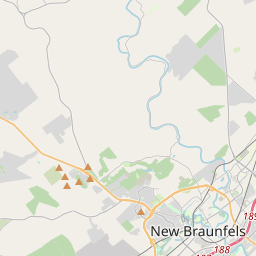New Braunfels Woolen Mill







German immigrants August Tolle and Dr. Theodor Koester purchased lots 271 and 272 in 1864 and built a large two-story building 100 feet long and 60 feet wide using hewn trunks of cedar. The building was built as a brandy distillery and to manufacture medicinals. In 1868, the building was sold to the New Braunfels Woolen Mill Manufacturing Company. The factory utilized the Comal River water for steam power installing a boiler, chimney and warning bell. The company was successful, but lacking a trademark, closed because other manufacturers used the name and produced inferior products.
In 1901, German immigrants Franz and Anna (Mielke) Popp bought the property and converted the building to the Comal Steam Laundry. It was the first laundry in New Braunfels and capitalized on the turn of the century desire for cleanliness and reducing the laborious task for citizens to wash their clothes. After Franz retired in 1913, the laundry was run by Anna and her children, Emma, Martha, Rosa and Bruno. During the great depression, Emma operated the laundry and also worked as a cook at the Phoenix Café to support her children. In 1934, the laundry closed due to a kerosene stove fire that resulted in Anna’s death. The building that had been a New Braunfels landmark for so many years was razed in 1954. The Popp family still owned the property in the early 21st century. Although all that remains of the building is the old bell, rock foundation and part of the chimney, it serves as a reminder of business ingenuity utilizing the Comal River
As one of the most visible programs of the Texas Historical Commission (THC), historical markers commemorate diverse topics in Texas history, including: the history and architecture of houses, commercial and public buildings, religious congregations, and military sites; events that changed the course of local and state history; and individuals who have made lasting contributions to the state, community organizations, and businesses.
The University of Texas at Austin, founded in 1883, is one of the largest universities in the United States and has produced many notable alumni, including several U.S. presidents.
In the early 19th century, German immigrants began to arrive, attracted by the fertile land and opportunities for a better life. These settlers established small farming communities and brought with them their language, traditions, and expertise in agriculture and craftsmanship. The town of New Braunfels was founded in 1845 by Prince Carl of Solms-Braunfels, becoming the first German colony in Texas.
The mid-19th century saw significant growth and development in Comal County, with the construction of schools, churches, and businesses. The area became known for its thriving agricultural industry, with farmers cultivating crops such as cotton and corn. The arrival of the railroad in the late 19th century further spurred economic growth and provided easier access to markets.
Throughout the 20th century, Comal County continued to evolve and adapt to changing times. The county's strong German heritage remained at the forefront, celebrated through events like Wurstfest, a German sausage festival. The tourism industry also grew, with visitors flocking to the county's natural attractions, such as the iconic Guadalupe River and historic Gruene Hall, Texas' oldest continually operating dance hall.
Today, Comal County is a vibrant and thriving community, blending its rich history with modern amenities and a strong sense of pride in its cultural heritage. With its beautiful landscapes, strong economy, and warm Southern hospitality, Comal County continues to be a desirable place to live and visit.
Comal County Timeline
This timeline provides a glimpse into the major events and milestones that have shaped the history of Comal County, Texas.
- 1846 - Comal County established as one of the original 23 counties in the state of Texas
- 1847 - Settlement begins in the area with the founding of New Braunfels
- 1850 - Comal County's population reaches 2,013
- 1861-1865 - County residents actively involved in the American Civil War
- 1870 - Completion of the first railroad through Comal County
- 1885 - Jacob's Well, a natural artesian spring, becomes a popular tourist attraction
- 1920s - Economic growth in Comal County, driven by agriculture and manufacturing industries
- 1941-1945 - County residents contribute to the war effort during World War II
- 1968 - Canyon Lake, a reservoir on the Guadalupe River, is completed
- 1990s - Rapid population growth and urban development in Comal County
- 2007 - Construction begins on the controversial Trans-Texas Corridor project